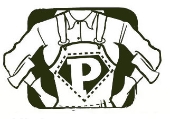I am an inexperienced permaculturist. I am working with a friend who took Ben Falk's Permaculture Design Course.
Over the past twenty years my property has become a wonderful place for wildlife and recreation. During this time, we have spent significant time building access roads and trails, ponds, doing forest improvement thinning, and improving mast production. These improvements have increased recreational opportunities like swimming and hiking and have created access to all areas of the property for work and observation. While I don’t have any hard data to give you, the result has been that wildlife populations and diversity have increased over the last 20 years. Plantings, specific clearings, and edge creation have caused bird populations to increase, small mammals, like squirrels, are now regularly seen, ruffed grouse and turkey sightings are not uncommon, and deer are ubiquitous.
My next hope for The Land is to make it more productive in terms of quality human food for myself, my family and my friends, and less importantly yield products that will be income producing in the future. With that in mind, the next big project on property will be to create a Food Forest on an approximately one half acre field created about five years ago when we dug a second pond.
The property is located in the northern temperate zone (western New York), growing zone 4 to 5, at an average elevation of 1900 feet. The field is approximately 300 feet long and varies from 60 to 100 feet in width. It has an uneven elevation gain of 19 feet from the northern tip of the pond to the top of the field. The field is oriented almost due north/south. The field is in Permaculture zone 2, about 500 feet from the house. The pond is stocked with a variety of minnows and shiners, Koi, Catfish and Blue Gills, with plans to add either Perch or Walleye in the future.
The soil in the field is shallow, rocky with clay beneath. The soil tends toward acidity and the current grasses and ground cover are acid loving. Over the past 5 years we have planted about 10 fruit trees in the field. Of those 7 remain: 2 Elberta Peach, and 5 apple; 2 Cortland and 1 each Yellow Delicious, Lodi, and Red Jonathan. The Cortland started fruiting this season. There is one “structure” in the field, a Peace Pole set in a 10 foot diameter rock garden.
The field and pond are completely surrounded by young woods (60 to 80 years of old field succession) with Black Cherry, Red Maple, Beech, Birch, Pin Cherry and Aspen being the predominant species. The specific edges of the field are: on the south the pond, one the north a road I would like to keep open, on the west there is a partial “hedge” of Blackberry bushes, and on the east woods.
The plans call for digging swales and planting an over story of nut trees, an under story of berry bushes, with herbs, insectories, attractants, and comfrey. I would also like to use hugelkultur inbetween the swales to provide a medium for vegetables in the future.
Initially our hope is to create a warm horseshoe using the pond and the fields north south exposure as a heat capture area. "Hedge" plantings of Black Locust and Maximillian Sunflowers in and around the existing blackberries on the western side to discourage deer.
The following is a plant list for Food Forest:
o Over Story
Butternut
Northern Pecan
o Under Story
Chineese Chestnut
Fruit Trees
Filbert
Black Locust
o Lower Layer
Blueberries
Buffaloberries
Goumi
Seabuckthorn
Gooseberries
Elderberries
Raspberries
o Herbs
Comfrey
Basil
Lavender
Mint
Oregano
Lemon Butter
Bee Balm
Calendula
Lupine
o Vegies
Parsnip
Turnip
Asparagus
o Ground Cover
Hairy Vetch
Clover
Wild Flower Mix
o Hedges and Deer Block
Black Locust
Maximillian Sunflower
In the pictures below. The 4 Red Maples in the Google image are no longer there. The black dots in the swale image are the existing fruit trees.
I am very open to suggestions and ideas.









